The deployment was a success, with lots of traffic passed and SITREPs sent and received. We were able to help firefighters, city administrators, and other citizens with official traffic, welfare traffic, and coordination of firefighting efforts with email and text over HF radio. The town was under a Level-3 evacuation and was virtually a ghost town, with two fires moving in, and a skeleton crew of city officials, fire crews, and a handful of remaining citizens.
Additionally, we operated a Black Echo FM Broadcasting station to keep the citizens informed of updates and a renewed evacuation order on 107.5 FM.
We could see the orange glow in the sky as we traveled northward, but our first glimpse of the blaze was about 30 minutes south of Omak, WA. We stayed the night in our vehicles in the parking lot of the Omak Inn, watching three separate fires in the mountains around us. In the morning we met up with [code name] Delta, who escorted us around the barricades to Conconully, 19 miles to the North West.
Along the route power lines lay on the ground, power poles were burned in whole, half, and busted pieces along the charred hillside on both sides of the county road.
Once in town we were introduced to the Mayor and Fire Chief and were given the Community Hall (grange) to set up the SIGCEN (Signals Center) directly across the street from the fire department.
The Mayor meets with one of the city firefighters for updates as the fire from the north looms closer (below).
We set up our communications center within minutes of our arrival
Antennas consisted of:
– Hustler free-standing 5-band HF with ground radials
– Inverted V multi-band HF dipole (for NVIS, but not set up until Saturday morning)
– Ringo Ranger 2m vertical
– VHF J-Pole tuned at 107.5 MHz for the FM broadcasting station (250 mw, of course!)

Communications gear consisted of:
– HF Rig (Yaesu 897D)
– Yaesu FT100 for 2m operations
– We had two Icom V8000 2m radios, but didn’t use them
– Yaesu 2400 2m mobile (we didn’t have enough 2m antennas though (add those to the list. Note- build two more copper J-poles)
– Bearcat trunking scanner
– Uniden P-25 decoding scanner that we used for ‘Close Call’ for collecting the local frequencies and adding them to the Bearcat scanner
– Various Wouxun, Anytone, and Baofeng HTs.
– I had my IC-7200 and manual tuner ready to go in a large ammo can
– We had at least two other HF dipole antennas and enough coax to get the 7200 operational, but never did.
What would I do differently?
1. Set up the 7200 and dedicate it to net check-ins with the other AmRRON operators and keep the 897D dedicated to welfare traffic and RMS Express email duty.
2. Set up the Icom V8000 dedicated to the linked repeater
3. Set up the Yaesu 2400 mobile 2m and task [code name] ‘Yosher’ with making 2m contacts and scanning for intel on simplex and area repeaters
4. Reallocate the FT100 to making digital/RMS contacts with the AmRRON network.
NOTE: The city administrative personnel and firefighters used an assortment of Baofengs and commercial VHF and UHF comms and a local repeater set up for Fire/EMS, and most of them had 1 to 3 channels programmed in. The DNR/USFS/BLM firefighters had similar commercial handhelds tied to a repeater. 
Multiple emails and texts were sent to loved-ones, other agencies, and firefighting personnel using HF ham radio communications. It was a huge morale booster and aided in efficient coordination and administrative tasks that they weren’t able to do without leaving the town of Conconully.
Radio Free Redoubt – Black Echo on 107.5 FM
THE TWO FIRES
The fire approaching from the south (above)
The other fire approaching from the North as the winds pick up to 30 mph from the north (above and below)
The media was a pervasive and annoying presence:
Due to widespread reports of looting and reports of at least one violent attack on a refugee who stumbled across a couple vehicle prowlers, everyone was responsible for their own security. The town, being 95% evacuated, was like a ghost town. Besides the fire crews who came and went, the only other presence on Friday night was an occasional citizen patrolling the streets in a vehicle. Firearms were carried openly and the sight of our weapons brought exclamations of approval, even by one city official who said “Oh, good! I’m glad to see that.” And she meant it.
As poorly as pictures can show at night, 7 to 9 fire truck crews battle the blaze on the north edge of town just three hundred yards to our north:
The following morning we go to inspect the blaze. Across from Pat’s cabin (a retired newspaper man), the flames are just a remnant of the blaze they were earlier in the night. Pat was a patriot who shared his views on world events with fervor and ‘salt’.
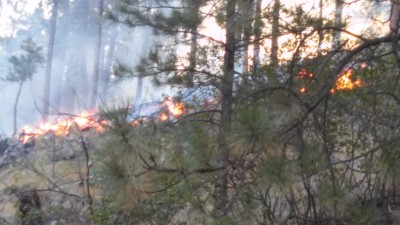 The fire (above) across from Pat’s cabin was all that remained of the previous night’s inferno. The fire crews battled for many hours until well after midnight. As you can see (below), Pat had no intentions of leaving, but he was readily prepared to in a moment’s notice, his bugout rig pointed toward the side street was ready to go.
The fire (above) across from Pat’s cabin was all that remained of the previous night’s inferno. The fire crews battled for many hours until well after midnight. As you can see (below), Pat had no intentions of leaving, but he was readily prepared to in a moment’s notice, his bugout rig pointed toward the side street was ready to go.
What a cool little town. Yes, this is a real post office (below)
At about noon on Saturday the local phone company had connected (and chained) a generator to a telephone box in town, reestablishing landline communications to the outside world. Shortly afterward we received news that the fire to the south of town had rerouted westward, as well as a forcast for low winds and in a direction suitable for sparing the town. On this news we assessed that our mission was successfully accomplished. We were done and it was time to demobilize.
We had the option of moving on to the next town in search of the next mission or packing it in and going home. Due to the work situations that the AmRRON team faced, we chose to demobilize and began the process of breaking down and packing up.
The drive home was an introspective time for the team, as we debriefed, joked, told stories, and recalled the highlights to each other over 2m simplex. Heading east on Hwy 2 toward Spokane, we skirted the edge of the definitive line between fresh air an fire smoke. It was a good, good mission and we all felt an overwhelming, satisfying sense of accomplishment. We responded in a time of need, and came to the aid of Americans in trouble. We mattered.
The interview with Conconully resident and refugee [code name] DELTA can be listened to HERE:


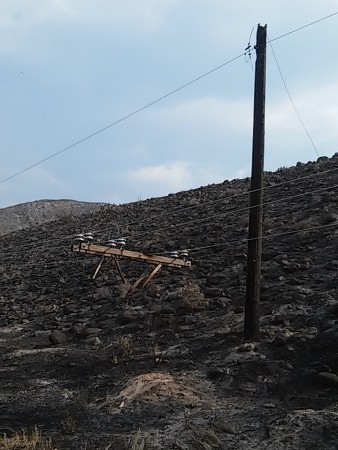



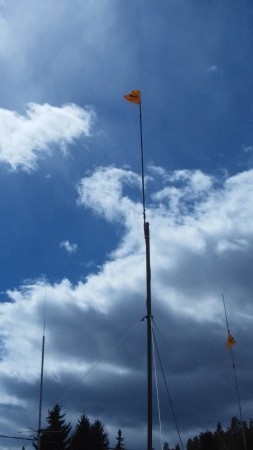
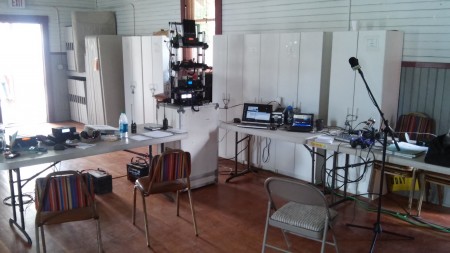

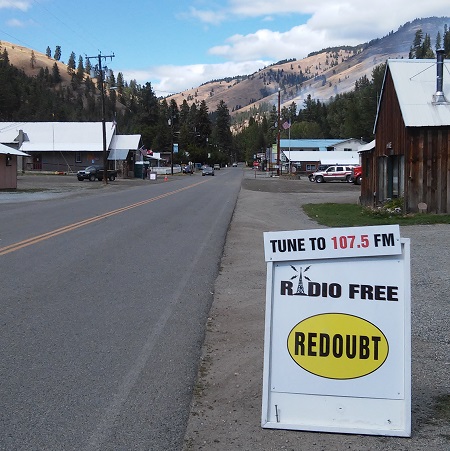


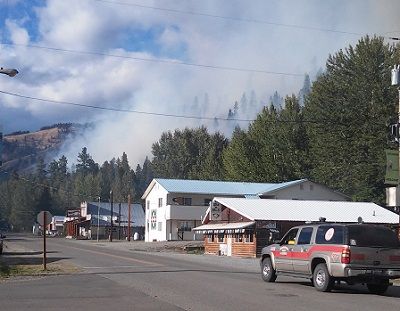


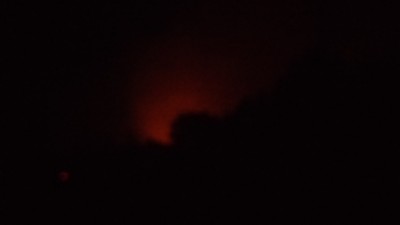

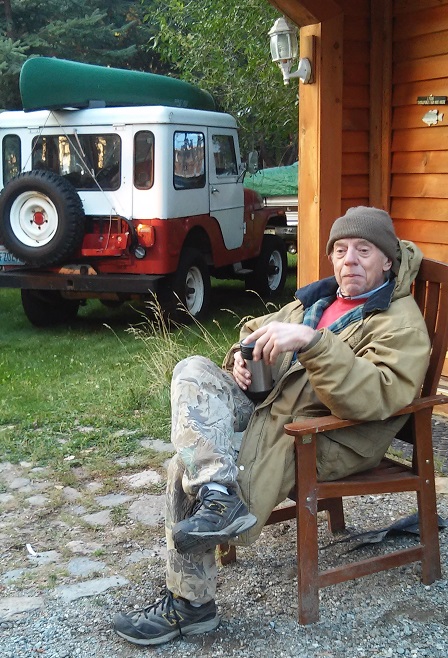
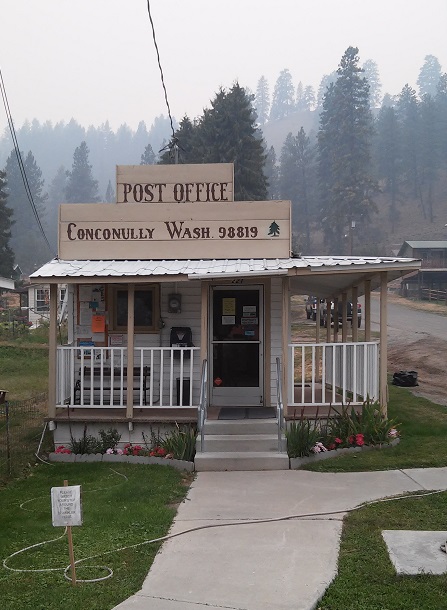
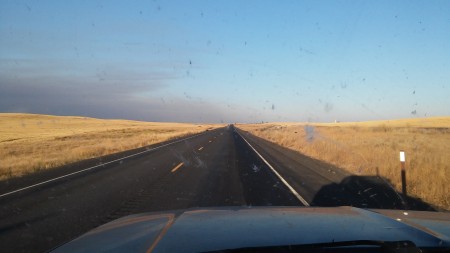
You folks have made me proud….
What a cool use of the black echo wish I lived closer and thanks for sharing the pics. Would love to have seen some video or heard some audio of contacts and actual traffic for a remote like this one. Good job guys keep up the good work.
My biggest regret was NOT recording many of the over-the-air QSOs (contacts). There were some very cool exchanges that took place. Would make the hair stand up on your arms listening to them, because they were real. Really got a sense of the urgency and danger that people were in.
Wow you guys did a great service for the residents and families on that area. Being in Pennsylvania I wouldn’t have been much help- BUT I really wanted to go and help.
I’m here on the East Coast to help whenever I can for you ANYTIME! I support you and all that you do.
[…] See here: https://www.amrron.com/2015/08/24/washington-wildfire-deployment-conconully-in-pictures/ […]
Was there APRS digipeater capability in the area? Would it have been worth adding?
Several cell towers and repeaters were reportedly damaged. The one repeater we could hit was (thankfully) a linked repeater tying north central WA together across the span of 40 to 60 miles. This gave us good situational awareness of developing fires, road closures, and evacuations in areas outside of our immediate AO.
Good work….
This is what it’s all about! I’m a firefighter in western Washington and I have many friends over there right now. I am in the queue to go over in the next group and go to work. I am studying for my HAM Technician license test which is next month. The very reason I have joined AmRRON and listen to RFR is to be a part of the SOLUTION like you were in this case! Way to go brothers and sisters!
Loved the podcast and hte update. Great job to all that helped! I am not please with ARES!
I enjoyed hearing and reading your sitrep. I applaud your efforts to serve. As an EC for ARES, please don’t take the comments by the DEC to be indicitive of all ARES members. We are in Western Washington, but if I would have been able, I would have assisted and welcomed your contacts. In an emergency, my team will use any help and work with any group it can. It is true that in this case we can’t self-deploy, but we certainly can assist over the air. Thanks for your service.
Thank you, sir. I’ve heard from many AmRRON operators who are also involved in ARES/RACES, and the feedback has been 100% positive, and mirror your response. We understand the strict ‘Non-self deploy’ policy of the ARRL. Agree with it or not, those are the rules that ARES members agree to when they join, and they should be respectful and abide by those rules. Anyone can obviously communicate without ‘authorization’ of course, in a life threatening situation. But deploying under the banner of ARES is a different matter. Likewise, I hope that AmRRON members don’t deploy to an emergency on their own without at least telling the staff of AmRRON, especially if they’re acting as an AmRRON team. First, it reflects poorly on us if we have AmRRON operations taking place and we haven’t a clue that it’s happening. Secondly, we can’t support them with intelligence or outside communications support if we’re not aware of their operations. It’s the courteous and right thing to do, to notify us, and as long as that happens, it won’t be necessary to make it a ‘rule’. We only ask that AmRRON radio operators use sound judgment and stay in contact. There may be a time when that isn’t feasible or tactically prudent, and we want all members of AmRRON to be able to act independently, and without direct guidance or support, if the situation requires it.
It’s a simple set of orders: Respond in times of need without being told to, be safe, be courageous, be courteous, be wise, be proficient, and get the signal out when others are counting on you.
Great job! Rms email to the outside world is critical and helpful to responders and the public.
I’m curious what was broadcast over the fm radio. That’s an interesting use of technology readily available to anyone in a car. Also what range did you experience with the 250mw and jpole antenna?
Thanks!
Thanks! If you do a ‘Search’ on the website for ‘Black Echo’ you’ll find the article covering that portion of that deployment. It was a huge success and was a great source of encouragement and news from the town Mayor and Fire Chief for the remaining citizens.
The town of Conconully is extremely tiny. We aired music while we were compiling news and weather reports. The J-Pole seemed to help the gain tremendously as we were surprised that folks reported being able to tune in several blocks away (which for that town, is basically ‘across town’). The transmitter is capable of 7 watts so I suppose in a life/death emergency when we needed to warn everyone to evacuate or die, we would easily be able to reach listeners several miles up and down the valley. There were no commercial radio stations broadcasting anywhere near our frequency so we didn’t cause any interference whatsoever, which was something we were very cognizant of.